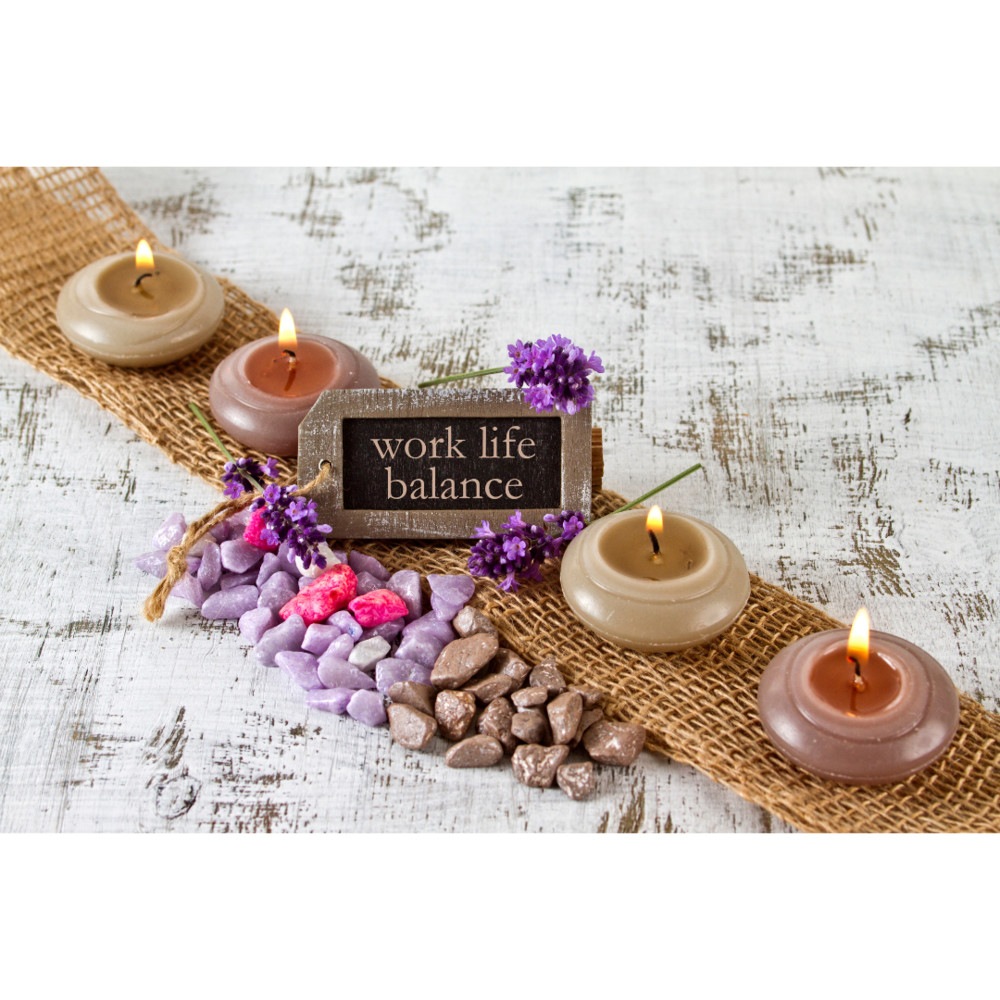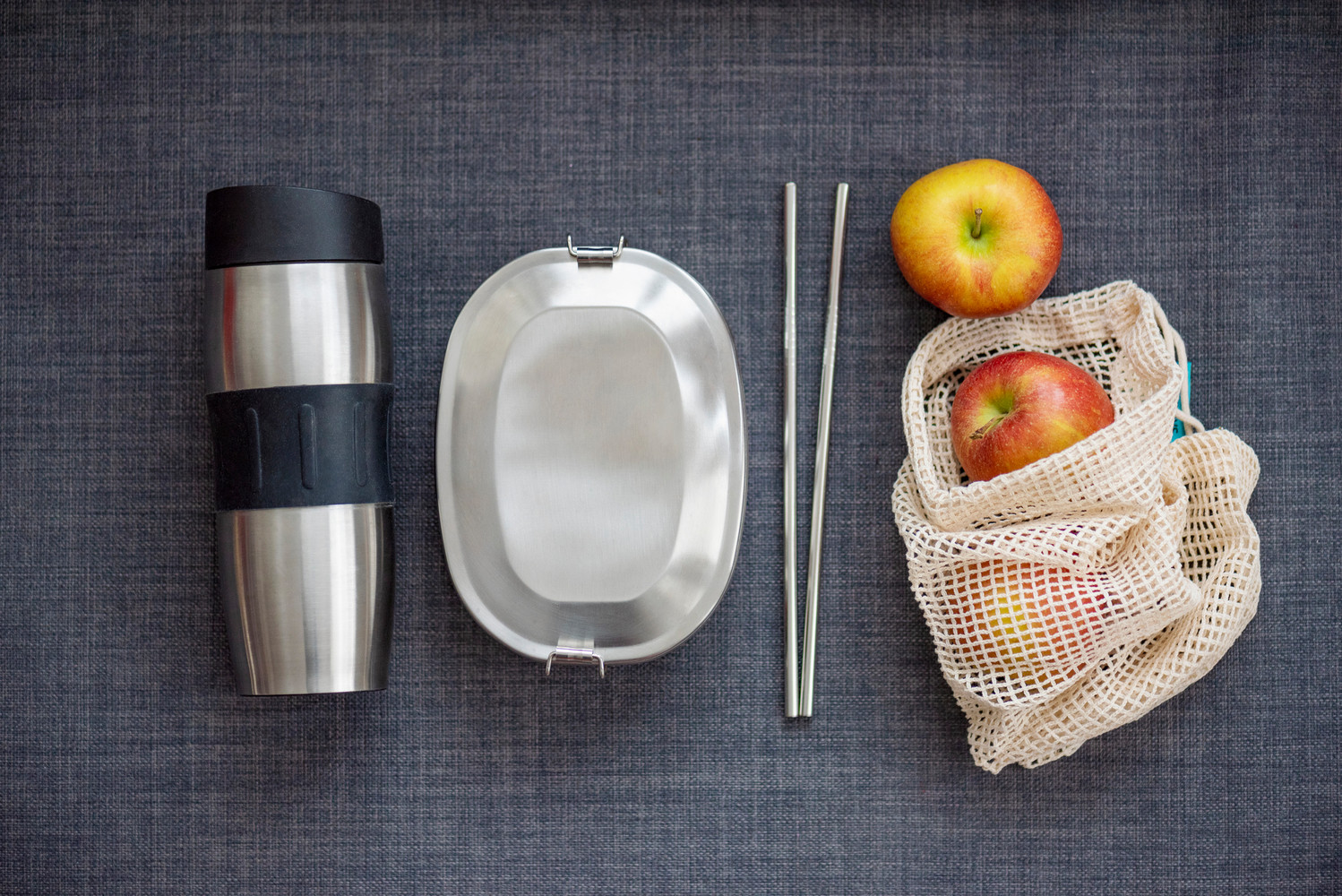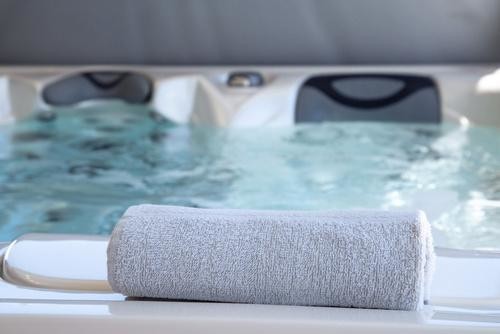Work & Life
The right balance starts with the right nutrition
Fit at work thanks to a healthy diet
You know how life can get. You’ve had a long day at work with long meetings. Or, perhaps your week was filled with business trips. You spend hours in front of your computer and often you forget to eat.
When you get stressed from too much work, this can lead to poor eating habits, an imbalanced metabolism, weight gain and illnesses. However, mindful eating can be your key to more success with your diet. It can increase your performance, while giving you more energy throughout your workday!
You’ve developed a solid work plan at the office. However, how can you efficiently integrate a healthy diet plan around your hectic daily work routine? The following are some tips to help you stay efficient throughout your day.

Eat delicious and healthy food – even at the office
Your workday is hectic, and often you only have time to eat something quick – such as fast food – in front of your computer. It’s understandable – things get busy and you have deadlines to meet! As a result, healthy food choices are ignored and there simply isn’t enough time to sit down and eat a good meal at lunch.
However, in the long run, your fast food lunch habit can be harmful. Research has shown that diet, exercise and stress influence each other. In other words, how and what you eat greatly affects your stress levels and that is why incorporating healthy nutrition habits into your workday is important. Planning a healthy lunch reduces stress and provides you with energy to get you through your day.
Under stress – consume more nutrient-dense foods
When we have no time to eat, we often choose foods high in sugar and fat, especially fast food, sandwiches and processed and ready-made meals. Your body craves vitamins and minerals and this need remains unsatisfied by poor food choices. That is why it is very important to supply the body with healthy, nutrient-dense foods, especially at work.

Staying efficient throughout the day – tips that will work for you:
- Start your day with a nutritious breakfast that gives you lots of energy.
- Avoid short-term “energy boosters” like coffee, energy drinks and chocolate bars.
- Drink enough water to maintain your concentration.
- During your lunch break, avoid high-fat meals such as sausage and French fries. Instead, choose meals that will sustainably supply you with nutrients and fiber.
- Whole grain bread with cheese, raw vegetables, and fruit are ideal foods for your business trip. They can be easily prepared and packed safely for transport.
- Consume your food mindfully and in a stress-free environment rather than eating while working at your desk.
- Stress can’t always be avoided. When this is the case, listen to your body. Warning signs of a prolonged overstrain due to stress include frequent weakness, irritability, sleep disorders, nervousness, dizziness, circulatory disorders, stomach problems and back pain.
- Possible ways to achieve more tranquillity and balance include walking, reading, and playing a sport. However, relaxation techniques such as autogenic training or progressive muscle relaxation also help to reduce inner restlessness, tension and anxiety.
- For example, you can take a walk during your lunch break or take a breather by an open window. Also, get some exercise with short stretching exercises at your workplace or climb the stairs instead of using the elevator.
Well nourished – even on the road
Business travellers and commuters regularly spend hours in a car or train. Eating a healthy diet is a real challenge when you’re faced by travel stress like this. What’s the solution? Pack a lunch the night before.
Safe the environment - do not use plastic containers.
You often don’t have enough time to relax and eat your meal and take-out food can be overpriced and offer poor nutrition. As a result, you slip back into your poor eating habits and you hectically eat fast food without really thinking about it. Instead, healthy meal prep the night before is the better option.

Stressed Out? How to recognize stress…
When you are in a stressful situation, everything goes over your head and you are unable to think straight. In the long run, excessive stress like this can make you sick. What happens in the body? And what are the typical warning signals?
In the case of chronic stress, you feel overtaxed, overactive, restless, hectic and even possibly threatened. As a result, your body is on constant alert. Needless to say, chronic stress is dangerous a capable of increasing your risk of diseases, such as diabetes, heart disease, digestive disorders, mental disorders, autoimmune diseases, obesity and cancer.
It is a fact that stress leads to sickness and disease. When you are constantly under stress, many body systems run at full speed, including your cardiovascular, nervous, and hormonal systems. At the same time, the digestive system slows down. Cortisol is one of the hormones responsible for chronic stress.

Typical illnesses associated with stress
Stressed people often suffer from:
- Gastrointestinal diseases
- Cardiovascular diseases (arteriosclerosis, heart attacks, high blood pressure)
- Headaches and back pain
- Elevated blood sugar or high cholesterol levels
- Depression and anxiety
- A weakened immune system, which increases susceptibility to infections and cancer
It is really important to perceive stress symptoms as serious warning signs.
It can be helpful to differentiate between stress characteristics depending on their levels. Different symptoms often appear at the same time, especially in the case of burnout.
These signs should not be ignored – burnout can lead to weeks and months of an inability to work, so it’s better to take notice of the signs early on and take action.

Mental stress:
- Negative thoughts like, “This is all going to go wrong anyway” or, “I can’t do this”
- Constantly comparing yourself with others
- Poor concentration
- Forgetfulness
- Feeling of emptiness in the head
Physical stress:
- Frequent tiredness, weakness, feeling faint
- Inability to switch off, feeling less and less rejuvenated
- Insomnia
- Dizziness, circulatory problems and increased blood pressure
- Stomach and/or intestinal problems, seemingly with no apparent cause
- Back and/or heart pain
- Sexual dysfunction
Social stress:
- Withdrawal and self-isolation
- No more time for yourself
- Neglect of sports, friends, family and holidays
- High level of coffee consumption
- Regular alcohol consumption
- Increased smoking
Emotional stress:
- Frequent irritability and a bad temper
- Nervousness
- Anxiety
- Uncompassionate toward others to the point of insensitivity
- Aggression and anger
- Depression
Targeted stress management
When you’re under pressure to perform, chronic stress can start with something as simple as a headache. How do you contribute to stress? And, how can you alleviate stress? Targeted relaxation methods can bring balance and satisfaction back into your life!
Keeping stress out of your life isn’t the answer. There are also certain moments of stress where you respond – appropriately – to threats or during a performance. The difference is, after experiencing positive stress you’ll always come down to a calm level again. Just how high your level of negative stress actually is depending greatly on how you assess the situation and your strategies for coping with it.
Once you become aware of how much you contribute to your stress, you can actively influence it and make positive changes.
Even short breaks can have a relaxing effect, such as walking, making music, taking naps, reading and playing a sport. However, it is important that you don’t view the activity as a “stressful” job or task that you need to get done. You need to view it as something relaxing and enjoyable! When you’re stressed, it’s often hard to turn that part off. This is why targeted relaxation is so highly recommended. The following are some of them for you to try.

Relaxation methods for everyday life
Relaxation exercises have a targeted effect and are easy to use. They help to reduce inner restlessness, tension and fears, while bringing about conscious relaxation, in a step-by-step process.
Mindfulness exercises: You are mindful when you are aware of everything around you that has no real value for you. This increases your ability to consciously differentiate yourself from requirements. For example, it relates to your ability to politely say “no” or to postpone something until later. Mindfulness leads to more self-determination in life and consequently to less stress and feelings of powerlessness. One recognized method, for instance, is mindfulness-based stress reduction (MBSR), which was developed by American molecular biologist Jon Kabat–Zinn. It is based in Buddhist roots, but is also detached from religious faiths. In MBSR, you concentrate on your breathing, as well as specific muscle movements, such as lifting and lowering the abdominal wall. The meditation associated with MBSR also helps you to become more attentive in your everyday life.
Autogenic training: In autogenic training, you relax your mind first and as a result, your body automatically relaxes as well. It can be incorporated into your therapy sessions such as cognitive behavioural therapy (CBT) or used as a personal self-help strategy.
It works in a similar way as biofeedback and hypnosis. You can listen to a therapist, a recording, or read a script yourself. Through regular verbal commands, you tell your body to relax and this helps reduce stress and control your heartbeat, blood pressure, breathing, respiration, body temperature and more. There are six standard exercises with autogenic training that allow the body feel relaxed, heavy and warm. You go step-by-step through your entire body.
Progressive muscle relaxation: In progressive muscle relaxation, you relax the body, then the mind. Step-by-step, you go through your body and tighten specific muscle groups by holding the tension for a few seconds. You then exhale and relax for about 60 seconds.
What are other relaxation methods? Some of these include:
- Breathing therapy
- Biofeedback
- Feldenkrais method
- Yoga
- Tai chi
- Qigong
Tip: Try out some of these relaxation methods and see what works best for you. Then, incorporate some of these relaxation techniques into your everyday life.
Your quality of life
Quality of life and performance are closely related. The everyday demands of life constantly reduce your energy. When enjoyable activities are no longer fun, that’s a sign that you urgently need a change. But, how can you succeed with this change?
When it comes to optimizing your performance, many people you have to function even faster and more effectively. At Metabolic Balance, we have a different definition of efficiency. For us, it means that you have greater energy levels to perform your daily tasks in an efficient way. If, on the other hand, you put yourself under pressure and ignore your needs, this will only lead to greater stress, excessive demands and in the worst-case scenario, to burnout. In a nutshell, a better performance can be achieved through exercise, a healthy diet and fun and enjoyable activities.

Tips for more energy in your everyday life
Create more moments of peace: Sometimes just five minutes can be enough to let go of your stress and regain balance during your hectic daily routine. How do you build an oasis of peace into your everyday life? Simply, take a break to contemplate life, meditate, take a short nap or walk in nature. If you have an hour or more to spare, you can use specific methods to cope with stress, such as progressive muscle relaxation or autogenic training.
Move around in the fresh air: The combination of movement and oxygen will recharge your batteries. Light endurance sports are ideal. A daily walk in the fresh air also balances work and psychological stress. Do you notice how your mood improves? The more regularly you move outdoors, the less drained you will feel!
Tip: Enjoy a walk in the morning to start your day in a good mood!
Eat a proper diet: The right diet is the basis for a better overall quality of life and greater performance. This is because your diet directly affects your brain and your ability to think and concentrate. Moderation in everything you do can really promote greater mental wellbeing and your ability to enjoy life. For example, in the Okinawa region of Japan, there are relatively more centenarians than anywhere else in the world. This means they have reached the age of 100. In addition to their healthy diet, they have a golden rule: “Only eat until your stomach is 80% percent full!” In conclusion, those who eat mindfully and don’t always consume too much will be rewarded with more energy and quality of life into old age.
Practical exercises for more balance
Work-life balance can be achieved with small steps and healthy daily habits. Physical exercise is a great way to bring your body back into balance. Confidence and proper posture is how you can show external balance and this can help restore your inner balance.
As you read on, we will tell you simple and specific exercises that help bring balance to your mind, body and soul. What’s the best part?
The following exercises can be performed anytime and anywhere.

The gentle one-leg stand
It’s the perfect exercise while waiting for your bus to work. Use this time for a short workout. Repeat the exercise as often you want, or until the bus shows up!
- Stand up straight and fixate your eyes on a point a few yards away. Both feet are hip-width apart and have solid contact to the ground.
- Shift the weight to the right leg and tighten the muscles in your buttocks and thighs just a little.
- Raise your right leg slightly and hold this position for a while.
- Raise your left leg slightly and hold this position for a while.
The advanced one-leg stand
This exercise promotes flexibility, relaxation, good posture and concentration. The best time to practice the one-leg stand is in the morning and/or at night
- Stand up straight.
- Place the toes and the ball of your left foot on the instep of your right foot. The heel of the left foot points upwards and do not support the heel on the shinbone.
- Bring your fingertips together in front of your chest or place your hands together – as if you’re in a prayer position.
- Now slowly stretch your arms upwards in front of your face. First place your wrists on your head and then move your arms into the vertical position. Pull them up as high as you can without causing any pain.
- Try to maintain your balance in this position for about a minute. Breathe in and out deeply and calmly through your nose.
- If you feel safe to do so, close your eyes briefly.
- Repeat this exercise with the other leg. Perform the exercise three times per leg. In between exercises, loosen your leg muscles and relax.

